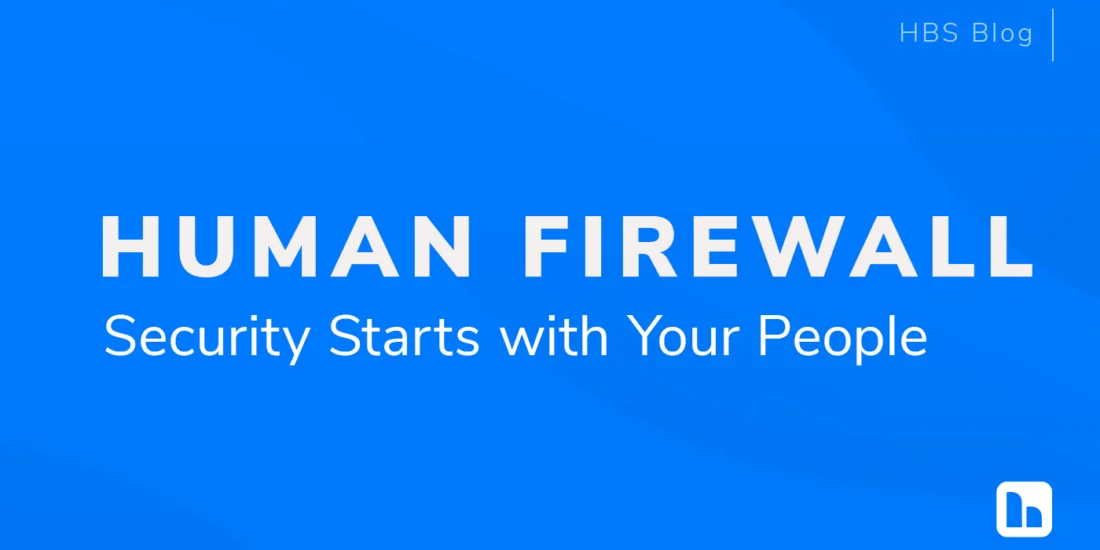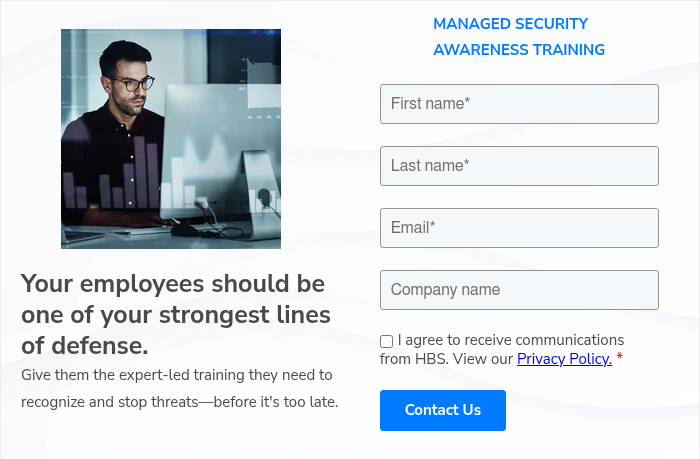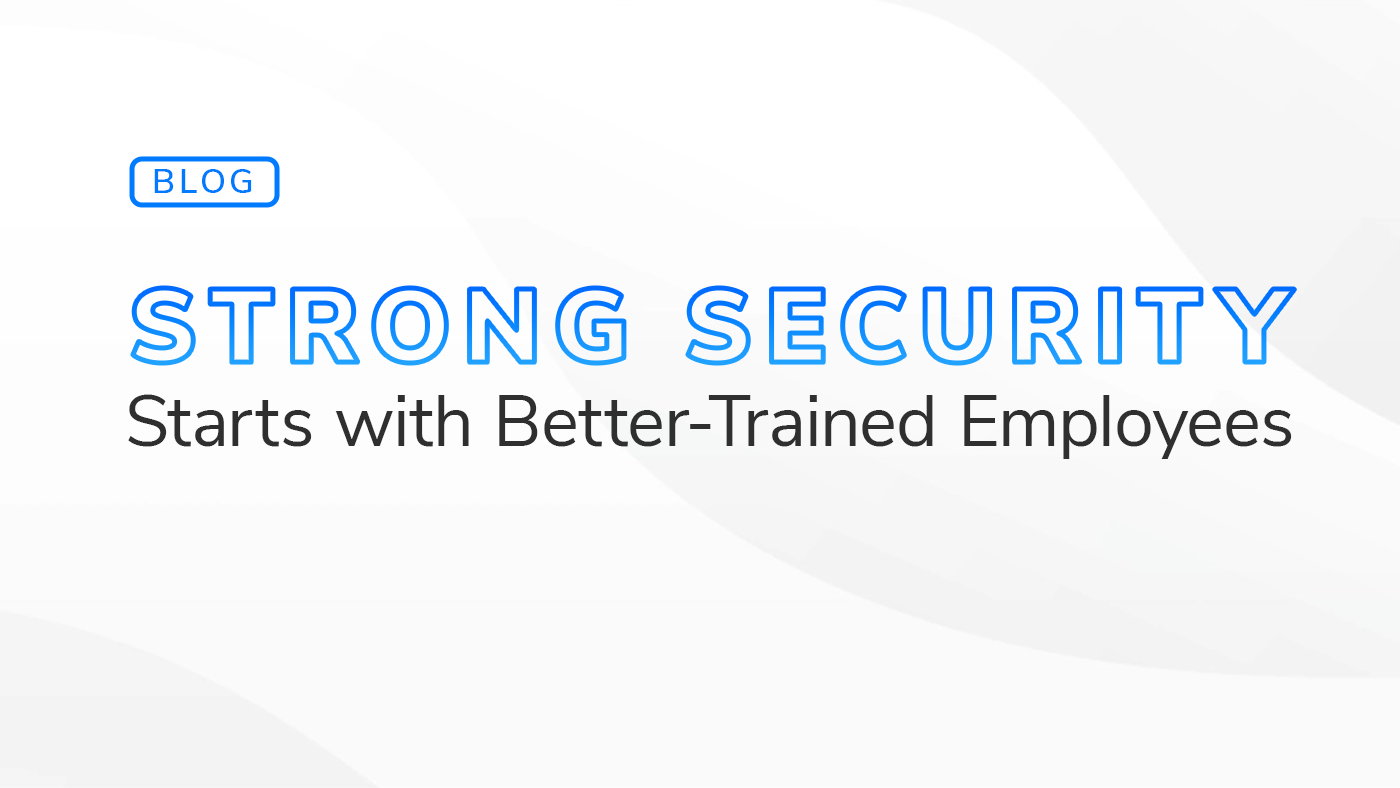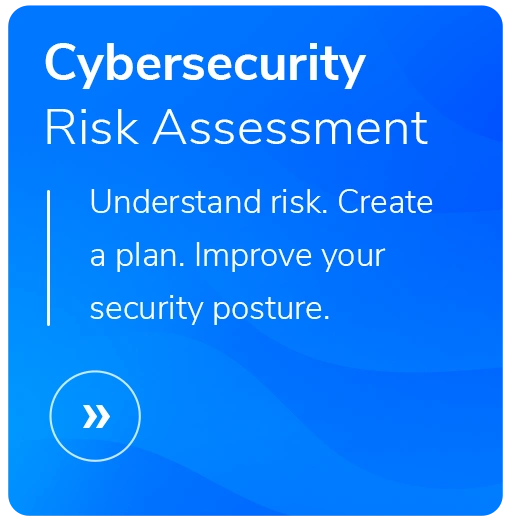What Is a Human Firewall?
- Updated: April 30, 2025
- Read Time: 3 mins

Cybercriminals don’t just target networks and endpoints—they target people. And they’re getting better at it.
That’s why one of your best defenses isn’t a tool or a system. It’s your team.
A Human Firewall is every employee who’s trained, alert, and ready to spot threats before they turn into incidents.
Here’s what a functioning Human Firewall looks like—and how to build one.
Why You Need a Human Firewall
Over 90% of cyberattacks stem from human behavior. Clicking a bad link. Reusing a password. Ignoring a red flag. It only takes one moment.
Companies invest in firewalls, antivirus, and security tools—and they should. But ignoring the human side of the equation creates a dangerous gap.
A great Human Firewall turns your biggest vulnerability into one of your strongest assets.
What Does a Human Firewall Look Like?
A good Human Firewall isn’t just someone who’s been through a training module. They live and breathe security awareness—and it shows.
Here are five traits of a good Human Firewall:
- Security-Aware: They understand the risks and know how to avoid them.
Security awareness training helps reinforce what to look for—and what to do next. - Vigilant: They notice when something’s off. Whether it’s a sketchy email or strange network behavior, they speak up.
- Skeptical: They question links, requests, and attachments—even when they look legit. Especially with AI-generated phishing scams becoming more convincing.
- Proactive: They don’t hesitate to report threats. In organizations that encourage reporting, people are far more likely to act.
- Resilient: They don’t get lazy about logins, and they don’t fall for social engineering tricks.
They build good habits—and stick to them.
- Security-Aware: They understand the risks and know how to avoid them.

Real Human Firewall Examples
Security buzzwords are one thing. But what does this look like in practice?
Here are five ways employees act as Human Firewalls every day:
- Email Vigilance: Someone receives an urgent request for sensitive data. Instead of reacting, they verify—and report the email as a phishing attempt.
- Password Best Practices: A team member uses a password manager, rotates credentials, and reminds coworkers to do the same.
- Screen Security: While handling sensitive data, they make sure no one’s peeking over their shoulder—and always lock their screen when stepping away.
- Incident Reporting: An employee sees something strange on the network and flags it early, helping IT respond before damage is done.
- Social Media Awareness: They know what not to post. No job titles, internal tools, or vacation plans that can be weaponized by attackers.
Human-Centric Security Starts with Culture

You can’t automate common sense.
Human-centric security is the idea that cybersecurity is everyone’s job. It complements your technical controls with awareness, training, and accountability.
It’s about making sure every employee knows:
- What a threat looks like
- How to report it
- Why their role matters
When people understand the “why” behind your policies, they stop seeing them as red tape—and start seeing them as real protection.

Start Building a Better Human Firewall Today
The best security tools in the world can’t protect poor employee behavior. At HBS, we help organizations build and sustain strong Human Firewalls through things like engaging security awareness training, phishing simulations, tailored cybersecurity guidance, policy development, and more.
Whether you’re just starting your program or want to level up your human defenses, we’re here to help.
Related Content

Managed Security Awareness Training
Boost cybersecurity with Managed Security Awareness Training from HBS: Empower employees to combat phishing and enhance defense. Transform risk into strength.

Employee Responsibilities in Information Security
Employees are the first line of defense against cyber threats. Learn how targeted security awareness training and an employee security quiz can reduce risks, prevent social engineering attacks, and strengthen your organization’s security culture.

Establish Cybersecurity Culture On An Employee’s First Day
Learn how to prioritize cybersecurity during employee onboarding and how HR and IT collaboration can create a cybersecure work environment from day one.







